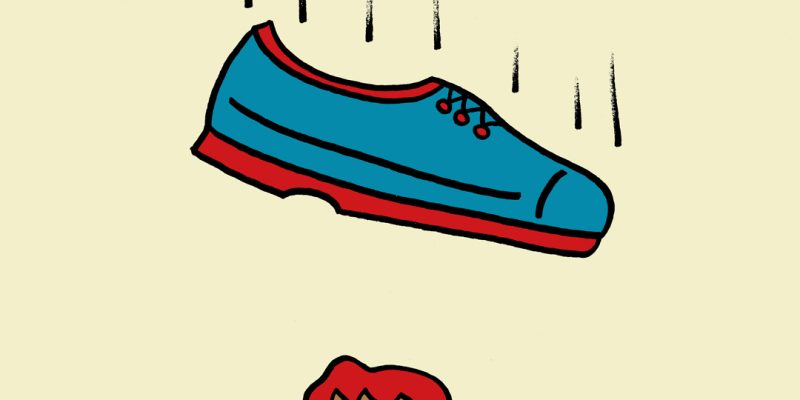Wait for the Other Shoe to Drop Meaning: Explained with Origins, Usage & Examples

The English language is full of colorful idioms, but one phrase that consistently confuses learners and even native speakers is “wait for the other shoe to drop.” What does it mean? Where did it come from? And how can you use it correctly in conversation?
In this guide, we’ll break down the meaning, origin, usage, and modern relevance of the phrase “wait for the other shoe to drop meaning” so you can understand and apply it like a native speaker.
What Does “Wait for the Other Shoe to Drop Meaning”?
To “wait for the other shoe to drop” means to anticipate an inevitable event, usually something negative or unwelcome, after something has already happened.
In simpler terms:
It’s the feeling of knowing something bad is coming—you just don’t know when.
Example:
“After the first round of layoffs, the entire staff was just waiting for the other shoe to drop.”
Core Idea Behind the Phrase
- Anticipation: You know something is coming
- Inevitability: It feels certain, not just possible
- Anxiety or dread: It’s usually something unpleasant
The phrase is commonly used in workplace scenarios, relationships, and economics—any situation where bad news or consequences are expected.
Origin of the Phrase
The phrase comes from early 20th-century America, inspired by tenement housing where units were stacked above each other.
The story:
One tenant would take off their shoe and drop it on the floor, causing a loud thud. The person below, hearing this, would wait for the second shoe to fall—already expecting it and possibly dreading the noise.
This literal situation became a metaphor for awaiting an event with a sense of anxious inevitability.
When to Use “Wait for the Other Shoe to Drop”
This idiom is perfect for describing:
| Situation | Example Sentence |
| After receiving partial bad news | “They fired two departments. We’re waiting for the other shoe to drop.” |
| Suspicious silence or calm | “It’s been quiet after the scandal. I’m just waiting for the other shoe to drop.” |
| Anticipating relationship drama | “He apologized, but I’m still waiting for the other shoe to drop.” |
| Economic or market downturns | “The stock dipped last week. Investors are waiting for the other shoe to drop.” |
Similar Idioms & Phrases
If you like idioms, here are a few that carry a similar sense of dread or anticipation:
- “The calm before the storm”
- “Brace for impact”
- “Bated breath”
- “A ticking time bomb”
- “Out of the frying pan, into the fire”
Each phrase captures suspense, tension, or expectation of something impactful.
Why Understanding This Idiom Matters
For English Learners:
- It’s a commonly used idiom in business and casual speech
- Understanding it shows deeper language proficiency
- It helps you read between the lines in conversations or media
For Native Speakers:
- Enhances expressiveness in writing and speaking
- Useful in storytelling, especially in building dramatic tension
“Wait for the Other Shoe to Drop” in Pop Culture
The idiom is frequently used in:
- News headlines: “After the first interest rate hike, Wall Street waits for the other shoe to drop.”
- TV shows: Used in dramas to foreshadow tension
- Novels and thrillers: Builds suspense
- Podcasts and interviews: Reflects personal anxiety or anticipation
Its continued usage proves it’s not just an old phrase—it’s still relevant in modern language.
Conclusion
Now that you know the meaning of “wait for the other shoe to drop,” you can recognize and use it naturally in conversations and writing. Whether it’s a looming deadline, financial trouble, or interpersonal conflict, this idiom captures that anxious pause before the next inevitable event.
Next time you feel like bad news is just around the corner, you’ll know exactly how to express it—with a well-placed idiom.
FAQs
1. What does “wait for the other shoe to drop” mean?
It means to anticipate an inevitable, usually negative, event after something else has already happened.
2. Where did the idiom originate?
It originated in early 20th-century tenement housing, where the literal dropping of shoes inspired the phrase.
3. Is the phrase used positively or negatively?
Typically negatively—it implies dread, tension, or expectation of bad news.
4. Can the idiom be used in business contexts?
Yes, especially when discussing layoffs, economic shifts, or organizational change.
5. What are similar phrases to “wait for the other shoe to drop”?
Similar idioms include “the calm before the storm,” “brace for impact,” and “a ticking time bomb.”
Also read: What Is a Remote Broadcast? Full Guide to Off-Site Broadcasting











